 Weird Stuff
Weird Stuff  Weird Stuff
Weird Stuff  Our World
Our World 10 Ways Your Christmas Tree Is More Lit Than You Think
 Movies and TV
Movies and TV The 10 Coolest Stars to Set Sail on The Love Boat
 History
History 10 Things You Didn’t Know About the American National Anthem
 Technology
Technology Top 10 Everyday Tech Buzzwords That Hide a Darker Past
 Humans
Humans 10 Everyday Human Behaviors That Are Actually Survival Instincts
 Animals
Animals 10 Animals That Humiliated and Harmed Historical Leaders
 History
History 10 Most Influential Protests in Modern History
 Creepy
Creepy 10 More Representations of Death from Myth, Legend, and Folktale
 Technology
Technology 10 Scientific Breakthroughs of 2025 That’ll Change Everything
 Weird Stuff
Weird Stuff Ten Bizarre Facts About The Doge Meme
 Our World
Our World 10 Ways Your Christmas Tree Is More Lit Than You Think
 Movies and TV
Movies and TV The 10 Coolest Stars to Set Sail on The Love Boat
Who's Behind Listverse?

Jamie Frater
Head Editor
Jamie founded Listverse due to an insatiable desire to share fascinating, obscure, and bizarre facts. He has been a guest speaker on numerous national radio and television stations and is a five time published author.
More About Us History
History 10 Things You Didn’t Know About the American National Anthem
 Technology
Technology Top 10 Everyday Tech Buzzwords That Hide a Darker Past
 Humans
Humans 10 Everyday Human Behaviors That Are Actually Survival Instincts
 Animals
Animals 10 Animals That Humiliated and Harmed Historical Leaders
 History
History 10 Most Influential Protests in Modern History
 Creepy
Creepy 10 More Representations of Death from Myth, Legend, and Folktale
 Technology
Technology 10 Scientific Breakthroughs of 2025 That’ll Change Everything
10 Places That Might Disappear Before You Can See Them
Some of the world’s greatest wonders are the historical sites that have existed for hundreds and sometimes thousands of years. Many of them were lost to human knowledge for centuries before they were uncovered. Thanks to urbanization, natural disasters, and pollution, however, it is likely that these historical landmarks will be lost once more before the end of this century.
10Glacier National Park
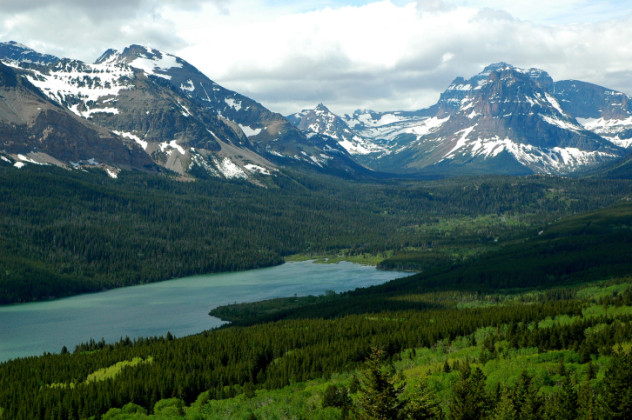
Around 10,000 years ago, the ice in the area of Montana’s Glacier National Park was about 1.6 kilometers (1 mi) deep. When the park was founded in 1910, there were around 150 glaciers. Only 25 of these giants remain, and it is suspected that all of them might be gone by 2030.
The heart of the National Park, Grinnell Glacier, has lost more than 90 percent of its ice over the past century. It’s no surprise that global warming is the cause, but the park seems to be getting hit even worse than other places: The temperature in the area has increased 1.8 times more than other areas around the globe.
It’s not just the glaciers that are in danger of disappearing. The icy streams that have always flowed from the great sheets of ice keep the ecosystem of the park going, with its wolves, herds of elk, and one of the largest populations of grizzly bears in lower America. If the glaciers go, not only will the last remnant of the Ice Age disappear, several species will find their home in shambles.
9The Valley Of Kings
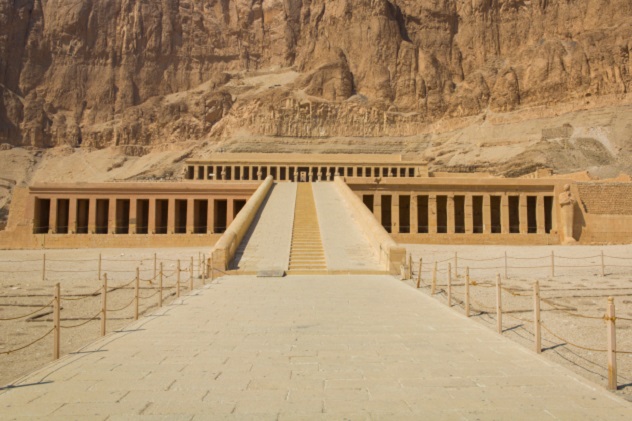
The resting places of the mighty pharaohs of Egypt, such as Ramses II and the boy king Tutankhamun, have inspired wonder and awe through centuries. Unfortunately, they have also inspired many treasure hunters who were little more than thieves and plunderers.
But now, the Valley of Kings faces a different kind of threat. This one comes not from greedy Indiana Jones wannabes but several thousand well-meaning tourists. Fungus has begun to grow out of control around the tombs, and scientists believe that the parasite has flourished due to poor ventilation and the respiration of thousands of visitors. The head of Egypt’s antiques has reported that the tombs may vanish within 150 years.
The engravings and paintings inside the tombs are already beginning to disappear. In response, the number of tourists allowed inside the tombs has been restricted, and some exhibits have been closed completely. Hopefully, these restrictions, along with the use of new ventilation systems in the tombs, will be enough to save them.
8Seychelles
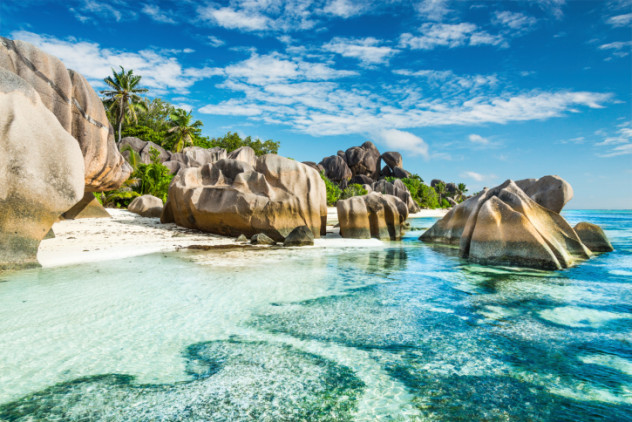
It’s probably a fair bet that most people haven’t heard of the Seychelles, a group of around 115 islands not far from the more well-known Madagascar. They were somehow completely uninhabited by humans until the British East India Company discovered them in the 1600s. After that, they became a haven for pirates. Today, they are known as one of the greatest places to see the biggest fish in the sea: whale sharks. The Seychelles hold some of the earliest scientific records about the magnificent creatures, which are strictly protected.
However, the islands could be underwater in as little as half a century, largely due to the destruction of the coral barriers around the beaches. The Seychelles have fallen victim to one of the most brutal incidences of coral bleaching worldwide. The rising temperatures destroy the coral and leave it a disturbing, almost skeleton-like white, destroying entire ecosystems and leaving everyone who lives on the islands vulnerable to devastating events like hurricanes.
7Olympia
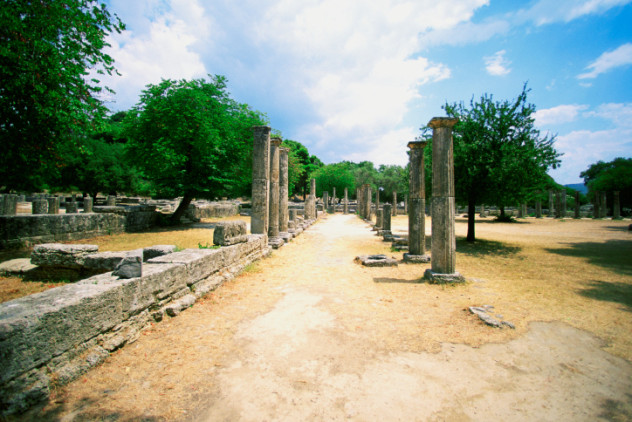
When we think of ancient Greece, most of us think of the Greek gods, Sparta, or the Olympics. While everyone knows that the Olympics were created in Greece, not many people know about the exact city where they were founded.
Olympia has been occupied by several different cults over the years who worshiped several different gods, from Kronos, the King of Titans, to the goddess of lust and beauty, Aphrodite. Over time, one cult claimed the city completely for their god, the ruler of the Olympians, Zeus himself. Nearly everything in the city was designed to honor him, from the magnificent 13-meter (42 ft) statue covered in gold and ivory (which, sadly, no longer exists) to the Olympic games themselves. Today, the Olympic flame is still ignited in this city and then transported to wherever the games are being held.
Ironically, it is fire that threatens the origin site of the beloved games. In 2007, several fires that were started by arsonists spread rapidly across the country, killing more than 60 people. The flames were barely contained by a dedicated team of firefighters just a hillside away from wiping out the historic site of the original games. Thanks to global warming, fires have become much more commonplace and much more powerful, threatening to burn the site to a crisp and render all efforts to protect it in vain.
6The Chan Chan Archaeological Zone
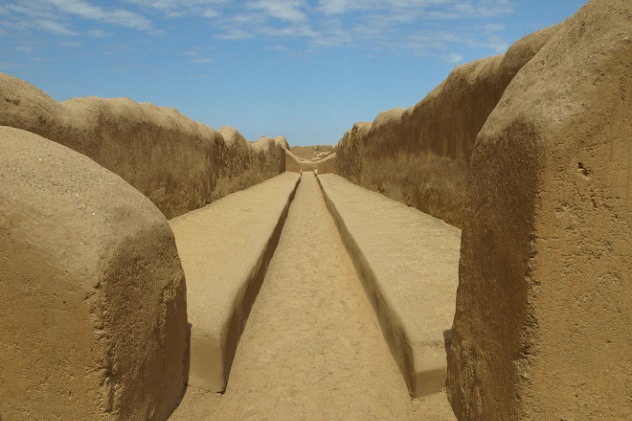
Chan Chan, which enjoys the titles of the largest pre-Columbian city to be discovered and the largest ever adobe city, covers around 20 kilometers (12 mi) of Peruvian land. It was originally inhabited by the Chimu people, who divided the city into nine different citadels, each of which were autonomous.
Chan Chan has also been labeled by anthropologists as the “first true engineering society in the New World.” Their projects, such as an irrigation system that supplied the entire city and their attempt to create a massive canal that would have stretched to the Chicama River 80 kilometers (50 mi) north, were unheard of in “civilized” Europe. The city lasted for more than 600 years before the Incan Empire finally managed to overthrow it.
Today, this archaeological wonder is under attack not only from those who come to pillage and loot but also from storms caused by the deadly El Nino phenomena. To make matters worse, powerful earthquakes put the city in danger of being crushed completely.
5The Galapagos Islands
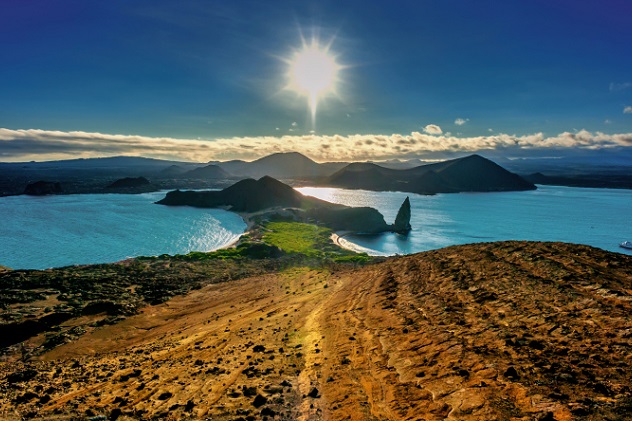
Everyone who’s taken a high school biology class knows about Charles Darwin and how he was inspired to devise his theory of evolution while studying the wildlife of these secluded islands. Nearly 9,000 species, many of which can be found nowhere else in the entire world, call these islands home. However, the wildlife that makes the Galapagos so unique is being seriously threatened.
As the number of immigrant workers and tourists has increased, the latter by more than 12 percent every year, so does the number of invasive species. Goats and pigs eat the food that the native species need to survive, and predators such as rats make off with the young and the weak. For thousands of years, there were no predators at all on the islands, and evolution works too slowly for many of these unique animals to hope to catch up in time.
4The Chersonesos Archaeological Site
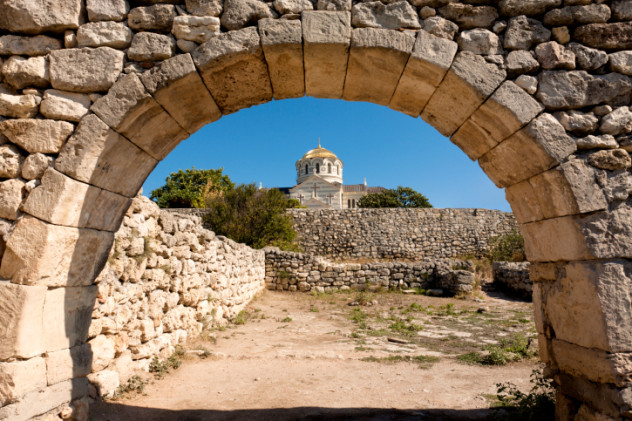
Though it is located in modern-day Ukraine, southwest of the Crimean Peninsula, Chersoneos is actually an ancient Greek site, founded between 300 and 200 B.C. However, much like Ukraine currently, it was not a peaceful site. Though it was one of the few relatively democratic societies at the time, historical records have shown that this city-state was constantly at war against the Scythian people and the Roman Empire. It eventually lost its independence to the latter.
In the fifth century, most of the Greek buildings and temples were destroyed as Christianity became the dominant religion. However, even becoming part of the Byzantine Empire was not enough to save the society, as nomadic tribes raided and burned it around eight centuries later.
The Soviet Union discovered the site when they annexed Crimea in the 1800s. It was rigidly protected and reconstructed, becoming one of the most important sites for Russian historians and archaeologists to study. Today, it is under attack by both natural and man-made forces, as coastal erosion, pollution, and urban encroachment threaten its destruction.
3Intramuros
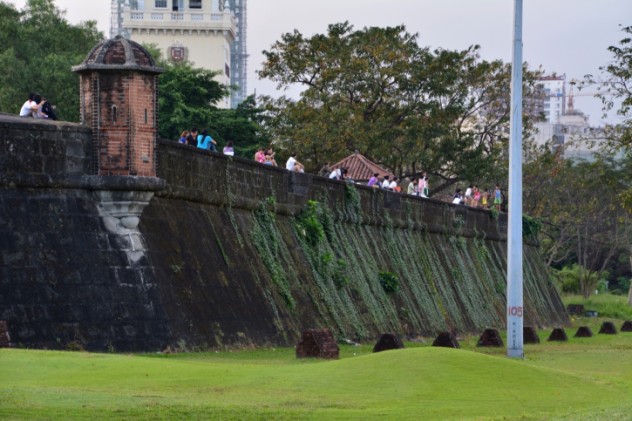
The name of this district of Manilla, which is the second largest city in the Philippines, means “within the walls.” It’s a very appropriate moniker, considering that it has been guarded by the same walls since they were built in the 16th century despite the horrific damage and destruction they have endured. It was the original capital of the city, when the Spanish Empire still owned the territory.
During World War II, the Imperial Japanese Army invaded the Philippines. Manilla was hit especially hard, and several historical buildings within Intramuros—such as the Santo Domingo Church and the original University of Santo Tomas—were ravaged. However, the real destruction occurred when America fought to take back the city from Japan. After this attack, only 5 percent of the original structures were left standing, and 40 percent of the walls had turned to rubble.
In 1951, Intramuros was declared a historic monument. Slow progress has been made toward its restoration, including the return of its five original gates to their former glory. However, these ancient walls cannot keep out the modern world. Several franchises of Starbucks and McDonald’s have been erected around the ancient city, and the moats surrounding it have been converted into golf courses. Historians tremble at what will come next.
2Hisham’s Palace

Hisham’s Palace was buried underneath the sand in A.D. 747 and remained there until Palestinian archeologist D.C. Baramki began excavating it in 1934. Sadly, historians fear that the site might not be around in as few as 100 years.
Intriguingly, no one is quite sure what Hisham’s Palace is supposed to be. When it vanished from sight, it also seemed to vanish from any historical text. The only hint archaeologists have found is a chunk of pottery bearing the name “Hisham.” Baramki’s colleague, Robert W. Hamilton, has argued that this is proof that the palace belonged to the heir of the caliph, Al-Walid II. All we really know for sure is that it was definitely built in the early eighth century and destroyed by a massive earthquake.
Tragically, we might never know the palace’s secrets. It’s threatened by the massive expansion from the neighboring, modern Jericho as well as extremely vulnerable to the natural elements after being buried under the sand for so long. The sand appears to be seeking to claim it yet again.
1Lamu, Kenya
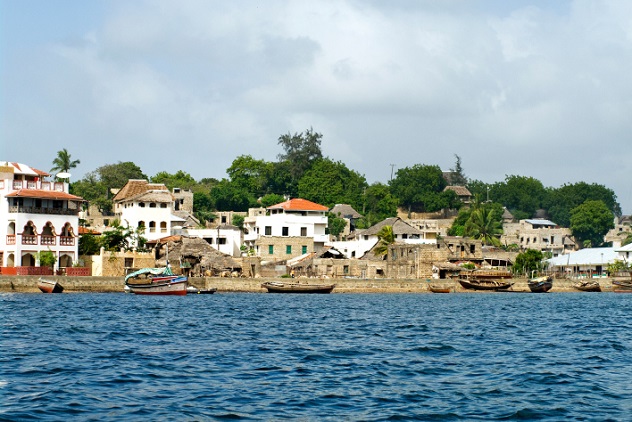
This city has been a World Heritage Site since 2001, but it has been around since the 14th century. Lamu was one of the original Swahili settlements, founded on the east coast of Africa, and it’s still inhabited to this day. During its golden age, Lamu was one of the biggest cities around, a scholastic center of arts, politics, and literature. The city later became an important strategic location for both Germany and Britian, and it only gained its independence along with Kenya in the 1960s.
Although Lamu has been a bustling town filled with people for many centuries, people nowadays are doing their best to avoid or leave it. In 2011, travel to Lamu was banned due to several kidnappings carried out by the terrorist group Al Shaabab, who claims vengeance for stolen Muslim lands as its motive for the kidnappings as well as several brutal assaults on the city just this year that have left many dead. The terrorist attacks make it all but impossible to preserve historical sites such as Lamu Fort.
+The Taj Mahal
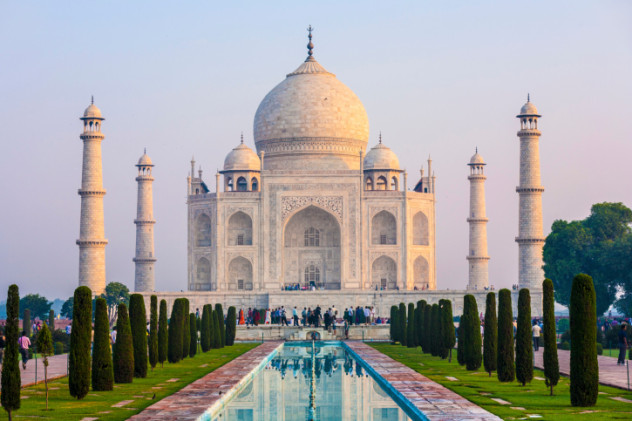
Created as a tomb by Emperor Shah Jahan for his wife, the Taj Mahal took more than 20,000 laborers, 1,000 elephants, and 20 years to complete. It is considered one of the most breathtaking marvels of the ancient world, but in under five years, it could be completely closed to the public.
A little over 10 years ago, one study determined that air and water pollution were starting to turn the beautiful white building a sickly yellow color, and the India Supreme Court ordered that a small fortune be spent restoring the site. The program to halt the damage attracted global attention, but as of 2014, the problem isn’t getting any better.
Though some workers at the monument have denied it, studies have shown that the levels of pollutants such as nitrogen oxide have increased dramatically. Vehicles are not permitted to come within 500 meters (1,640 ft) of the palace. As the city of Agra and the massive amount of traffic that comes with it continues to grow, the Taj Mahal may still be doomed.
Ashley Lewis is a hardworking college student, sweating blood in her quest to finish her first novel. She wrote all throughout her high school career on the school newspaper, making up lists about the wacky and weird.








